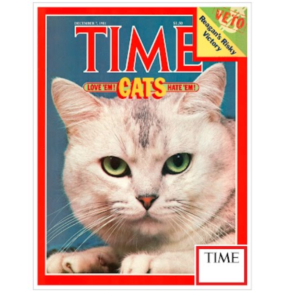 We wrote earlier this year about NFTs (non-fungible tokens) as an innovative new digital product and even an asset class, that artists and brands alike can use to connect with their audience. In this year, we’ve seen the space expand even more, with implementations like the creation of social clubs via NFT characters like Bored Ape Yacht Club, and even a major NFT focus at this year’s Art Basel Miami Beach.
We wrote earlier this year about NFTs (non-fungible tokens) as an innovative new digital product and even an asset class, that artists and brands alike can use to connect with their audience. In this year, we’ve seen the space expand even more, with implementations like the creation of social clubs via NFT characters like Bored Ape Yacht Club, and even a major NFT focus at this year’s Art Basel Miami Beach.
Brands have also been enthusiastic to get into this space. with creative initiatives like AMC Theaters minting Spider-Man NFTs for movie ticket purchasers who are part of their VIP program, free NFTs from Pepsi, and many, many apparel collabs. Much like the early days of social media when brands decided to dive head-first into these channels, we expected to see a few NFT missteps among the successes. Some have been less popular than expected, underlying the need for a complete, multi-channel product marketing strategy (it is a new product, after all). Just because your brand mints a NFT, it won’t automatically go viral.
Take your foot off the gas (pun intended) for a minute before you launch. A few things to think about beforehand:
- Make sure your customers want this. It’s fun to experiment, but understand the line between adding value and being opportunistic. NFTs have strong roots in the art world and creativity can be paramount. TikTok’s “Top Moments” NFTs underwhelmed despite a PR blitz and full page ad in the New York Times. Why? For the most part, the stars of the “Top Moments” themselves did little to engage with promoting the project, so it looked to many like an attempt to cash in. This made it more of a “cringe” moment than a “top” one.
- Set your goals. Do you want to build community and followers (on traditional social media channels or more emergent ones like Discord and Telegram), get press, support a charity, generate overall brand awareness, or get revenue?
- Consider quantity and price. Will it add value for customers because of its rarity, or are you more interested in extending your reach by offering something more broadly? A free or low-cost NFT could be an entry point for your brand. Alternatively, higher price points and exclusives can convey prestige to the buyer.
- Decide on your promotional strategy. Will you market to your existing customer base, run contests, advertise on digital and social media, lean heavily on PR and partners? Based on the goals you set, you can determine how much customer information you want to collect and what activities you want to require, if any, to give customers the opportunity to win or purchase.
- Choose a distribution method. How will they be sold? You may have some familiarity with major platforms like OpenSea and Rarible, but you’ll still need to decide who gets access and how. Particularly if you are going to make the item both limited-run and low- or no-cost, consider how you will ensure it’s distributed so that all of your fans have a fair chance versus the “bots” that have taken over many other markets like sneakers and tickets. Whether it’s a drawing, giveaway or sale, the right technology can better protect the process. Time Magazine’s NFT drop had this problem, resulting in about a quarter of the supply ending up in the hands of several addresses, and a lot of disruption in general.
- Work with the right technical people. This isn’t going to be the kind of expertise a lot of companies have in-house (and please don’t put out a job listing looking for “20 years of blockchain experience” unless you think you can hire Satoshi Nakamoto). Working with the right platform or agency can also help protect you from pitfalls like what happened with McRib’s NFT where a racial slur was entered on the blockchain, possibly by someone with prior knowledge or who uncovered the contract another way. Web3 is still the internet… and you may remember Boaty McBoatFace and Microsoft Tay.
- Avoid unintentionally including offensive content or creating content that isn’t accessible to all of your users. In addition to technical concerns like the above, you may benefit from running the entire campaign past your internal diversity, equity and inclusion (DEI) team or, having it vetted by external DEI consultants like InclusiCheck to ensure the campaign is as inclusive as possible.
Experimenting with new ways to get in touch with your customers, like NFTs, can be a fun way to build community, extend the reach of your brand, connect with new customers and establish a presence in an entirely new digital world. If you’re interested in exploring strategies in this space, we’d love to chat – contact us to learn more.